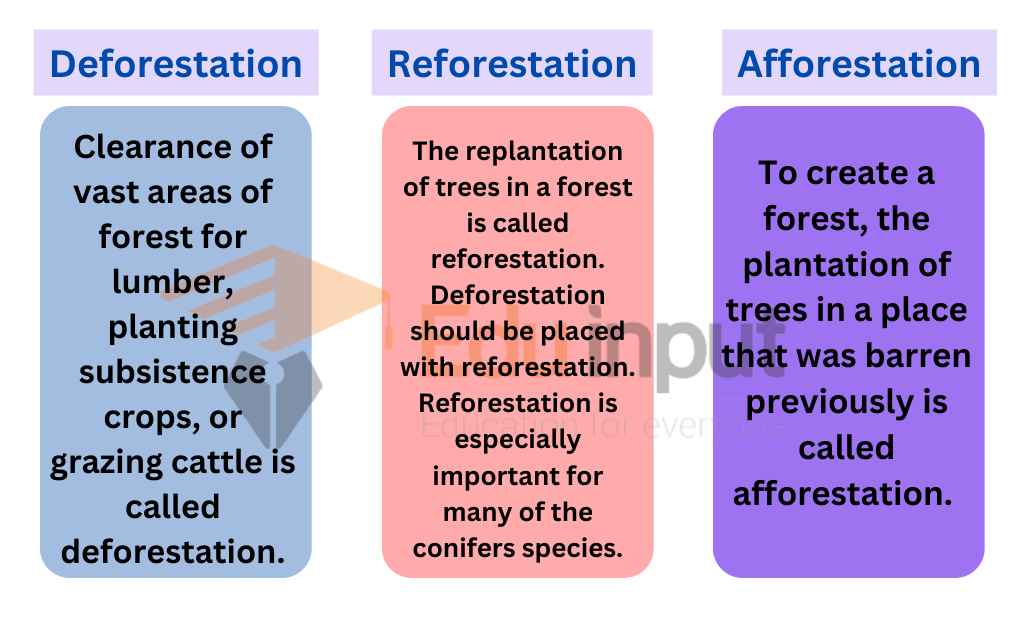What is Air Pollution?-Definition, Types, and Effects
The presence of substances in the atmosphere produced directly or indirectly by man which affect his health and properties is called air pollution.
What is Air Pollution?
Burning of fuel, fossil fuel and waste of different kinds release poisonous gases. These gases are sulfur dioxide, carbon monoxide, hydrogen sulfide, fluorine, chlorine, ammonia, bromine, iodine, nitrogen oxide, ozone, etc.
There are many hydrocarbons that are released into the atmosphere as pollutants, such as ethylene, acetylene, benzopyrene, and propylene. Ethylene is released from automobiles and the combustion of natural gas, coal, or wood. Millions of tons of these poisonous gases are produced every year in industrialized countries from factories, electricity power stations, and automobiles.
Types Of Air Pollutants
There are two types of air pollutants:
Primary Air Pollutants
There are many sources of air pollution, but some emit pollutants directly into the air. These are called primary air pollutants. These include:
1. Sulphur compounds
2. Carbon compounds
3. Nitrogen compounds
4. Halogen compounds
5. Particles of different sizes suspended in the air also act as pollutants.
Secondary Pollutants
The second-hand pollutants which originate from the original pollutants in the atmosphere are called secondary pollutants. These reactions may be:
1. Photochemical Reactions: These reactions occur between nitrogen oxide, oxygen, and waste carbons in the presence of light. It forms peroxyacetyl nitrate (PAN) and ozone O, Similarly, Chloroflouro-carbon (CFC) reacts with the ozone layer. It is also a photochemical reaction. The chlorine of CFC reacts with O and releases O₂ and atomic oxygen. It causes ozone depletion or the ozone holes.
2. Acid Rain: Sulfur dioxide in the air can react with rainwater to form sulphuric acid. This is called acid rain. When acid rain falls to the ground, it can harm plants, animals, and people.
3. Smog: The fog with smoke and chemical fumes forms a dark and thick covering called smog. Smog is very common in all industrial countries.
Effects Of Air Pollutants
Air pollutants have the following impacts on different organisms:
Effect On Plants:
Air pollutants can have disastrous consequences for plant life. Concentrated smog has been known to kill millions of trees in a year. Air pollutants can cause tissue to collapse and necrosis. They also cause the cells to undergo deplasmolysis. Some pollutants induce chlorosis in plants, which is characterized by pale green or yellow patches on the leaves. Additionally, some pollutants stunt growth in plants. Acid rain is also capable of destroying different parts of plants.
Effects On Animals And Humans:
There are certainly direct effects of pollutants on animals. They affect on respiratory tract and lungs. They cause pulmonary edema, chronic bronchitis, and lung cancer. So, NO, and NH, gases cause irritation in the eyes and nose. These are suffocating gases.
Carbon mono oxide (CO) is the most dangerous gas. It is produced by the incomplete combustion of fossil fuels. It reacts with hemoglobin and forms a stable compound carboxyhemoglobin.
It decreases the carrying capacity of hemoglobin for oxygen. Industries release many metals in the air like lead and chromium. These metals are carcinogenic. Similarly, some radioactive substance enters the atmosphere. They also cause cancer.
Greenhouse Effect:
Burning fuel in industries releases CO, which then forms a layer in the atmosphere. This layer is important because it allows solar radiation to pass through, but does not allow the Earth’s thermal radiation to escape.
As a result, the Earth’s temperature is continuously rising and changing climate patterns. Additionally, the glaciers are melting rapidly and more evaporation is taking place from the ocean. All of these things cause severe flooding.
Ozone Depletion:
The photochemical reaction of CFC with Ozone produces an ozone hole. Ozone filters most of the ultraviolet radiations. Now, these radiations fall on the earth directly. These radiations have very lethal effects on humans. They can cause skin cancer and other skin and eye diseases.
Control Of Air Pollution
Following measures can reduce air pollution;
1. High-quality lead-free petrol should be used, It has low sulfur content.
2. Use of CNG (Compressed Natural Gas) also reduces air pollution. It is an environmentally friendly gas.
3. Two-stroke engines should be replaced by four-stroke engines. Four-stroke engines do not produce CO.
4. All industrialists should be bound to install treatment cells in the chimneys of their industries.
5. Green gases should be used instead of CFC gases in refrigerators and air conditioners.






Leave a Reply